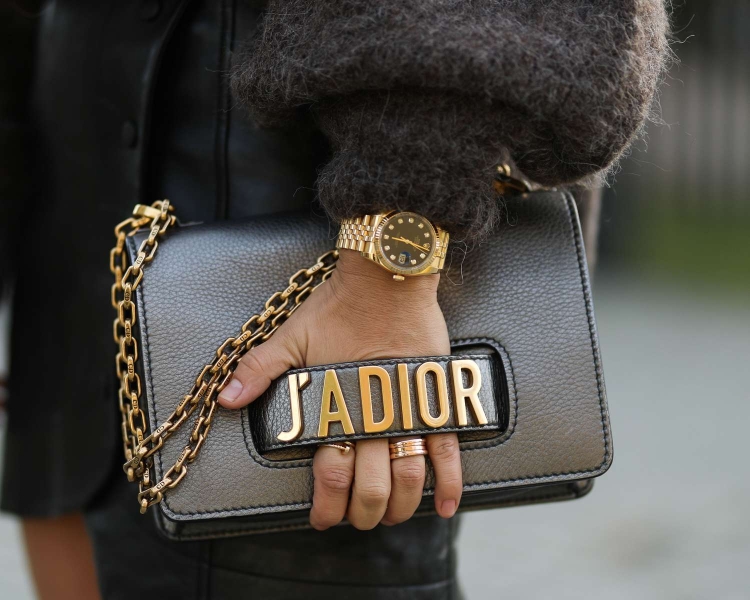Contents
Keep that sparkle and shine!

Regardless of trends, classic yellow gold jewelry deserves a spot in your capsule jewelry collection: These pieces are a good investment that you’ll wear for years—if you take care of them and clean them correctly. But how do you keep your gold jewelry looking sparkly and shiny? Well, it depends. There’s a wide variety in the type and quality of gold jewelry—purity can range from 9ct to 24ct. You might have a solid gold piece (which would be more expensive and a softer metal), or what’s called an alloy: Mixed with silver, nickel, zinc, or another metal, it makes the jewelry more durable and also often less expensive.
You could have plated jewelry (gold bonded to a base metal like copper, silver, or brass) or vermeil (sterling silver jewelry plated with a thick layer of at least 10k gold). Don't know the type of gold jewelry you have? Look closely at the piece, which should be stamped with the metal karat. You'll want to understand the nuances of your jewelry—because it'll impact how you clean it. You have a few options:
- Use gentle soap and water: For the gentlest and most minimally invasive method, grab a soft microfiber cloth, then put the piece in a bowl of mild soap and water. “Submerge the gold jewelry into this solution, allowing it to soak for approximately 20 minutes,” says Astrid & Miyu jewelry expert Charlotte Collins. “Following the soaking period, carefully remove the jewelry from the solution. To restore its brilliance, gently rub the piece with a soft cloth.” Don’t rub plated pieces too hard, or you’ll remove the plating. For a deeper clean, use a soft bristle toothbrush.
- Use an ultrasonic jewelry cleaner: Jill Martinelli, co-founder of Lady Grey Jewelry, likes this GemOro model. An ultrasonic cleaner uses high-frequency sound waves to create tiny bubbles that clear away residue over the entire piece, including the crevices that might be hard to get at using the above method. Be aware, though, that you can’t use it to clean jewelry with certain kinds of gems (more on that in a moment).
- Use Simple Green household cleaner: Martinelli explains, “One ounce of Simple Green with eight ounces of water: soak your piece for a few minutes, then scrub gently with a very soft toothbrush—it works wonders!” When in doubt, check with the seller to make sure a powerful cleaner like this will work for your piece.
- For fine jewelry, take it to a pro: Bobby Jain, CEO and owner of the fine jewelry brand FANA, says that fine jewelry might need insight from an expert, so “[take] them to a trained jewelry professional for a deep cleaning.”
Does your jewelry have serious residue on it? "Your standard household isopropyl alcohol can also be used to clean large surfaces of jewelry that has makeup, hairspray, or any sticky gunky residue on it," says Martinelli. Give the piece a soft wipe, but don't overdo it, since it's an abrasive material. (And, when in doubt, go to an expert.)
Products to Avoid
Don’t use baking soda or toothpaste, as they’re too abrasive—as is, believe it or not, paper towels, explains Allurez jewelry consultant Lisa Ann. And definitely avoid harsh chemicals like bleach, Windex, or cleaning agents, which include an all-metal cleaner that might not have the right ingredients to gently clean gold. Stay away from vinegar and alcohol if your piece has a gemstone in it. Don’t use citric acid or sulfate ingredients, adds founder and designer of AMYO Gina Nam. Says Martinelli, “You never want to use a jewelry polishing cloth on plated items—these cloths contain an abrasive compound that is woven into the fabric and will remove the plating from your jewelry.”
To preserve the quality of the piece, particularly if it's plated, avoid "alcohol, perfumes, and chemicals found in lotions or swimming pool water" while you're wearing it, says Collins. Ann adds that "lotions, soaps, powder, and even the natural oils from your skin [can cause] build up on your diamonds or gold jewelry, causing it to become smudged and dusty." However, some brands, like SENIA, "have been experimenting with PVD plating, which is more permanent than regular electroplating, and the pieces can be worn in water without worry," explains Senia. Always check the seller's website to see what products to avoid with your particular piece.

How to Clean Gold-Plated Jewelry
The above tips will also work for jewelry that's plated and vermeil. But, notes Jain, these pieces "tend to tarnish more quickly from exposure to cosmetics and chemicals," and Collins adds that "too much cleaning can speed up the fading of the gold plating," so you should be careful with them. Jewelry that's super-thin and made of wire runs the risk of breaking and being damaged easily, says Senia, and those pieces may not even be suitable for everyday use. When you're cleaning your pieces, "Don’t go over 10 strokes [with your cleaning cloth], as it may wear off the plating," says Nam. When in doubt, use the gentle soap and water method instead of anything more powerful.
You also need to make sure you're storing your plated jewelry correctly "to prevent silver jewelry from darkening due to oxidation," explains Collins. Using airtight containers can maintain the piece's shine and help minimize the frequency of cleaning.
How Often to Clean Gold Jewelry
Lower grades of gold may need to be cleaned more often (when in doubt, the seller of the piece may be able to tell you how often you should clean it). For plated jewelry, "it's a good idea to give it a gentle clean a few times a year to help the plating last longer and keep your pieces looking their best," says Collins. Fine jewelry may need to be cleaned every few months, says Jain. Ornate jewelry with tiny crevices can more easily develop buildup; Jewelry with clean lines and fewer edges may not get as dirty as quickly.
How to Clean Jewelry With Gemstones, Glass, or Crystals
It depends on which stone we’re talking about. You want to avoid the ultrasonic cleaner in some cases; Certain gemstones (like emeralds) can be sensitive to heat, and pearls, dyed stones, opals, peridot, and cubic zirconia run the risk of being damaged or broken. (This isn’t an exhaustive list; Do a Google search to figure out if your stone is on the no-no list.) Diamonds, rubies, and sapphires are more durable and can stand up to more intense cleaning methods, says Christina Senia, cofounder and designer at SENIA. Explains Nam, if you want to clean your softer gemstones, you’ll want to use “mild soap and water for freshwater pearls [and] natural semi-precious stones.”

